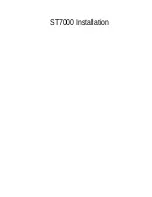
24
WILO SE 06-2016 V5.0 DIN A4
English
MAINTENANCE AND REPAIR
7.4. Disposal
7.4.1. Protective clothing
Protective clothing worn for installation, disman-
tling, and maintenance work is to be disposed
of in accordance with the German Waste Code
TA 524 02 and EC Directive 91/689/EEC.
7.4.2. Product
Proper disposal of this product avoids damage to
the environment and risks to personal health.
• Use the services of public or private waste dis-
posal companies, or consult them for the disposal
of the product or parts thereof.
• For more information on proper disposal, please
contact your local council or waste disposal of-
fice or the supplier from whom you obtained the
product.
8. Maintenance and repair
Maintenance and repair work must be carried out
by an authorised service centre, the Wilo cus-
tomer service, or qualified personnel!
Maintenance or repair work and/or construc-
tional changes that are not listed in this operat-
ing and maintenance manual may only be car-
ried out by the manufacturer or by authorised
service centres.
Note the following:
• This manual must be available to and observed by
the maintenance staff.
• All maintenance, inspection and cleaning work
on the aeration system must be performed with
the greatest care by qualified personnel. Proper
protective clothing is to be worn.
• When working in basins, it is essential to comply
with the corresponding local protective meas-
ures. A second person must be present for safety
reasons.
• Lifting equipment in perfect technical condi-
tion and officially approved lifting gear must be
used for lifting and lowering the aerator field. The
max. permissible bearing capacity must never be
exceeded!
Make sure the lifting gear, suspension cable
and safety devices of the lifting equipment
are in perfect working order. Work may only
commence if the lifting equipment has been
checked and found to be in perfect working
order. If it is not inspected, fatal injuries may
result!
• Electrical work on the unit must be carried out by
a qualified electrician.
•
If flammable solvents and cleaning agents are
used, naked flames and smoking are prohibited.
• Aeration systems that are used in media hazard-
ous to health must be decontaminated. In addi-
tion, make sure that no gases that are hazardous
to health form or are present.
DANGER due to toxic substances!
During work in an environment hazard-
ous to health, e.g., in sewage or wastewater
treatment plants, there is an increased risk
due to bacteria and viruses. To mitigate the
increased risk, heed the following points:
• Open wounds must be cleaned and treated
immediately!
• Eating and drinking is strictly prohibited!
• Appropriate protective equipment must be
worn!
• Disinfect persons and tools when leaving the
unit!
•
If injuries are caused by fluids or gases that are
hazardous to health, apply the first-aid meas
-
ures specified on the notice at the working
premises and notify a doctor immediately!
• Make sure that the necessary tools and materials
are available. Order and cleanliness ensure safe
and smooth work on the aeration system. After
finishing work, remove any used cleaning materi
-
als and tools from the unit. Store all materials and
tools in their proper place.
• Always wear appropriate protective clothing
when performing cleaning and maintenance work.
It is to be disposed of in accordance with the
German Waste Code TA 524 02 and EC Directive
91/689/EEC.
• Use only original parts from the manufacturer.
8.1. Maintenance intervals
To ensure reliable operation, various maintenance
tasks must be carried out regularly.
The maintenance intervals must be specified
according to the load on the aeration system!
Regardless of the specified maintenance inter
-
vals, the aeration system or installation must be
checked if large bubbles appear during operation.
8.1.1. Intervals for normal operating conditions
Weekly, during short-term decommissioning
• Test run
• Drainage of the aeration system
Weekly, during regular operation
• Cleaning the diaphragm surface
Yearly, during regular operation
• Mechanical cleaning of the diaphragm
surface/aerator
•
Leakage test of the aerator field
• Maintenance measures of compressors/fan
• Filter replacement in the air supply
8.1.2. Intervals for harsh operating conditions
Under harsh operating conditions, the specified
maintenance intervals must be shortened accord-
ingly. In this case, contact Wilo customer service.
If using the product under harsh conditions, we
also recommend signing a maintenance contract.
Harsh operating conditions include:
















































